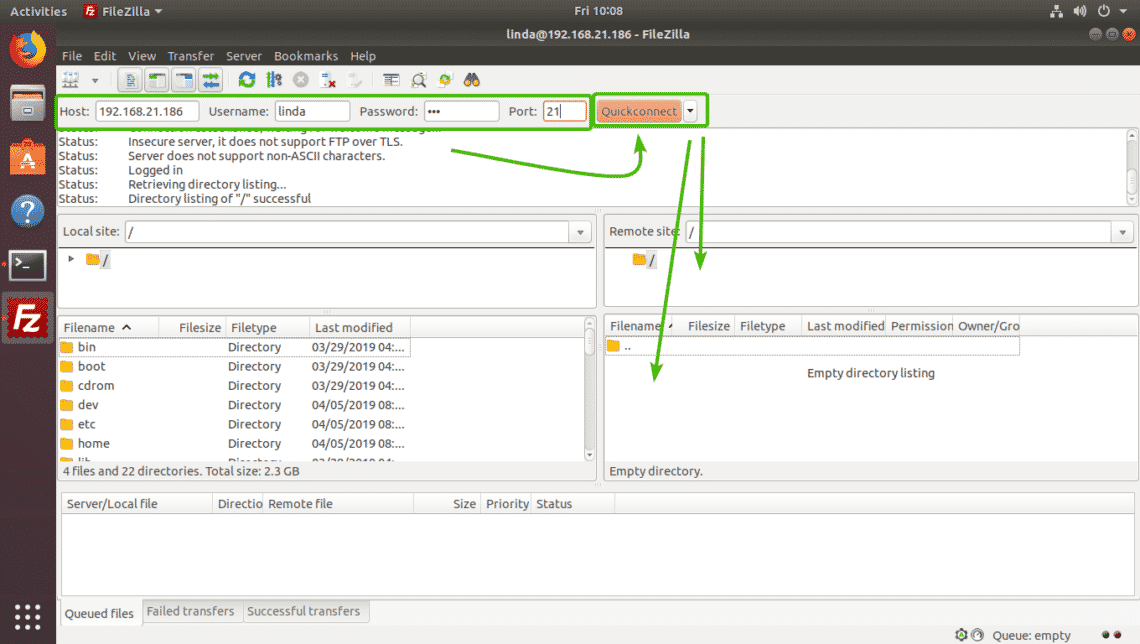
- #SETUP FTP SERVER UBUNTU HOW TO#
- #SETUP FTP SERVER UBUNTU INSTALL#
- #SETUP FTP SERVER UBUNTU UPDATE#
- #SETUP FTP SERVER UBUNTU PASSWORD#
Sudo chown hostinger:hostinger /home/hostinger/ftp/filesįinally, add a test file to the directory which will be used when we test everything later on: echo "vsftpd sample file" | sudo tee /home/hostinger/ftp/files/sample.txt
#SETUP FTP SERVER UBUNTU PASSWORD#

#SETUP FTP SERVER UBUNTU INSTALL#
You can install and enable it by typing: sudo apt-get install ufw It means that the firewall is not installed. If you see the following message: ufw: command not found Simply run this command to verify the status: But first, let’s just see whether the firewall is already enabled on your machine or not. To allow the Ubuntu FTP server to communicate via the internet, it needs to make its way through the firewall.Step 2 – Allowing FTP Traffic from the Firewall Now we are ready to configure the firewall. After the installation is completed, you should back up the original file so you can start with a blank configuration file:.You will be prompted with a confirmation message, which will require you to type Y and hit Enter to continue with the installation. Once it’s done, install the vsftpd daemon using the command below:.
#SETUP FTP SERVER UBUNTU UPDATE#
Wait for all the processes to complete, and you will see a confirmation as soon as the update finishes.

First of all, we’ll have to get our package updates before we proceed with the vsftpd installation.If you own Hostinger’s VPS, the login details are available in the Server tab of the hPanel.
#SETUP FTP SERVER UBUNTU HOW TO#
This tutorial requires you to know how to connect to a server through SSH. Therefore, you need to make sure your VPS is running on that particular OS. The difference is that FTP is responsible for transporting files through the internet while HTTP and SMTP handle the transfer of web pages and emails, respectively.īefore we begin, keep in mind that we will guide you through configuring an FTP server on Ubuntu 18.04. This is somewhat similar to HTTP (HypertText Transfer Protocol) or SMTP (Simple Mail Transfer Protocol). It also makes use of a client-server framework and SSL/TLS security to ensure secure and reliable data transfer.



 0 kommentar(er)
0 kommentar(er)
